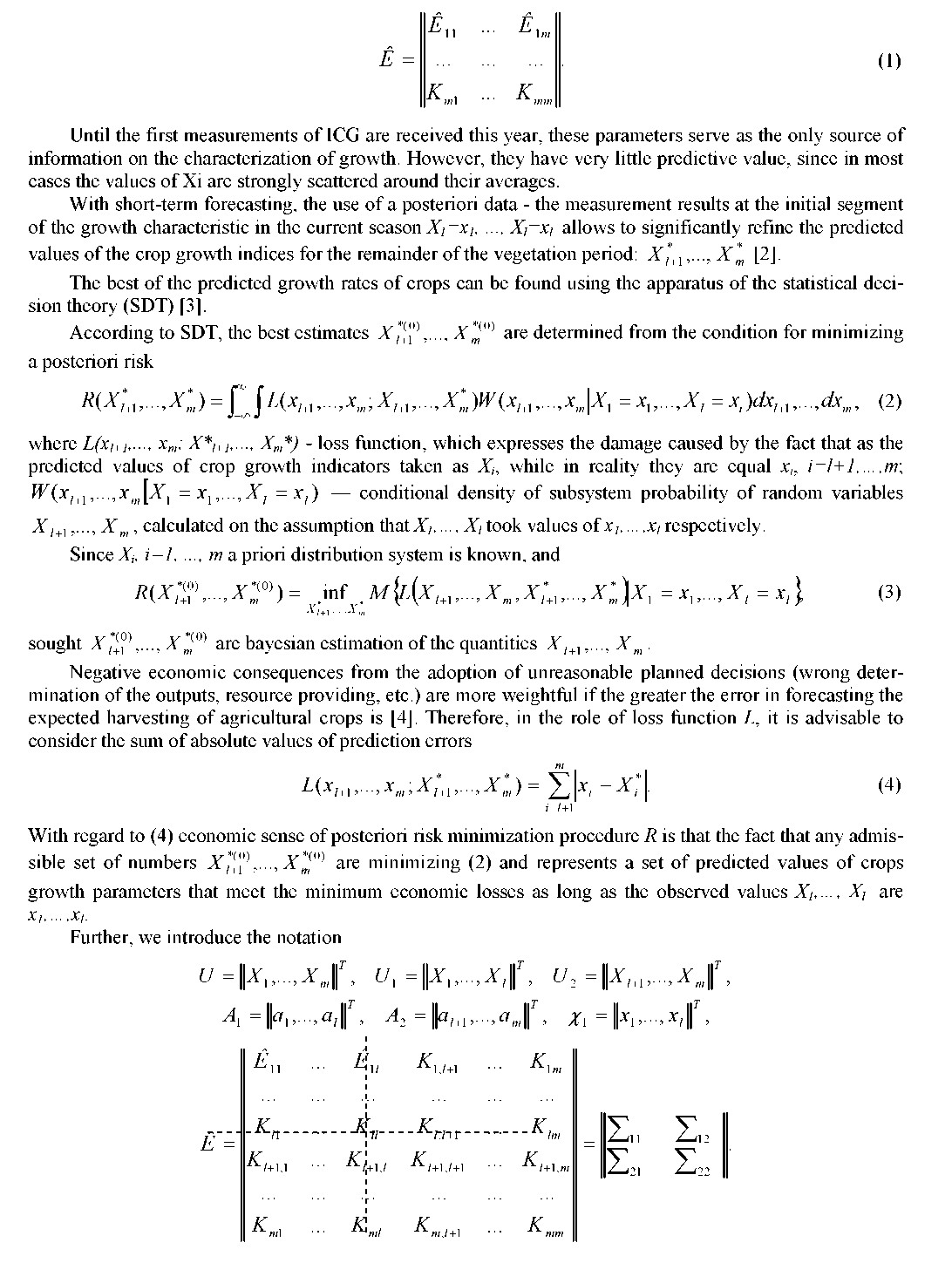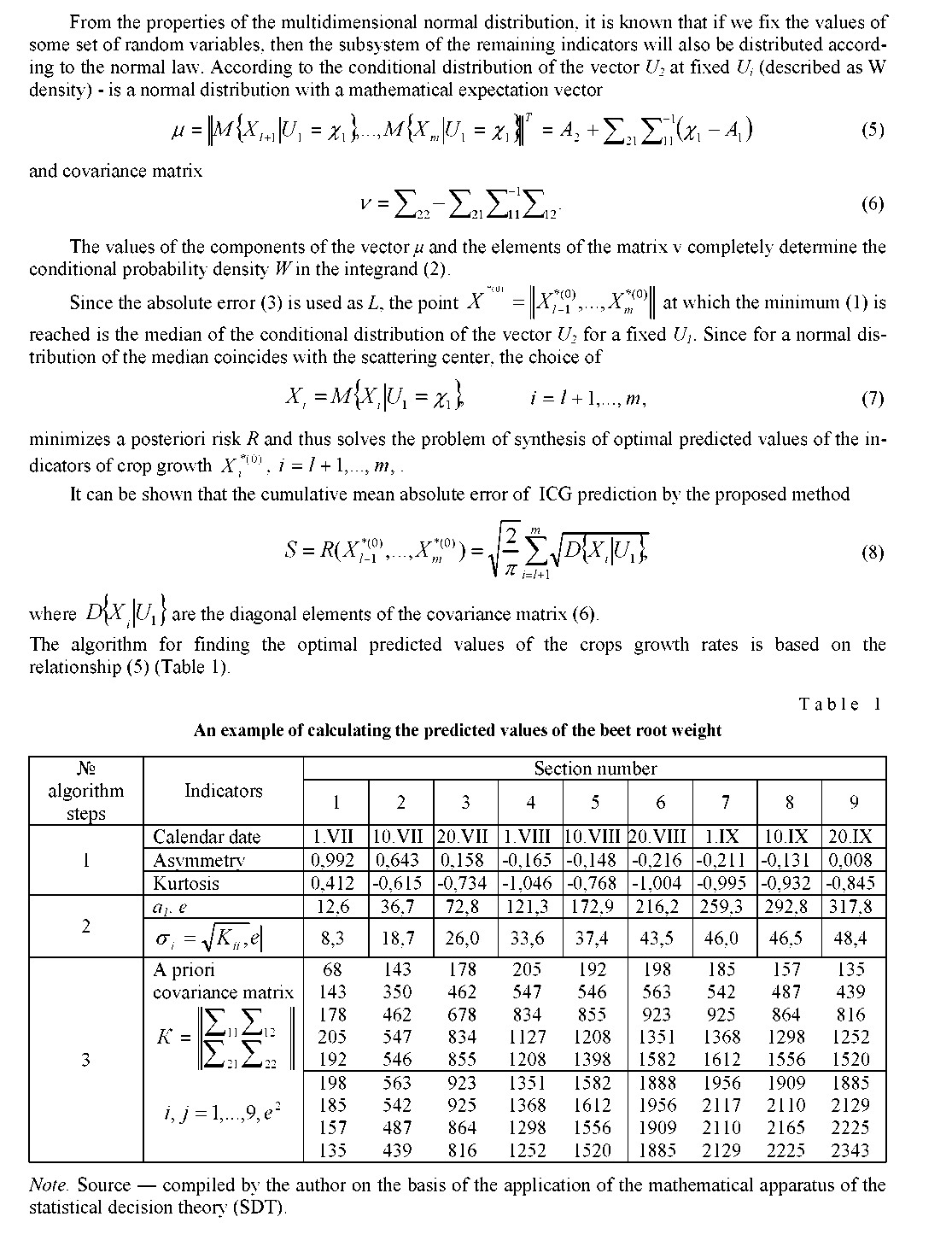The agricultural industry is among difficult economic systems. Expanded reproduction in agricultural industry represents interrelation of biological, engineering, organizational and economic procedures. Branches of agricultural industry are closely connected among themselves and with other branches of agro-industrial complex. The main task of forecasting and planning the development of the agroindustrial complex is to maximize the volume of the end product of the agroindustrial complex and to approximate the volume and structure of production to the volume and structure of the needs in it. The final output of the agroindustrial complex includes products used for personal consumption of the population, industrial consumption in non- agricultural sectors, increase in reserves, stocks and exports. Products are supplied to the consumer mainly through the sphere of circulation: state and cooperative trade, public catering, collective-farm market. A part of production, passing the sphere of circulation, is consumed directly by the families conducting personal subsidiary farm. Forecasting and planning of the development of agroindustrial complex is carried out on subcomplexes which are defined proceeding from technological interrelation of production of final products. An ultimate goal of agricultural industry - achievement of a steady rise of agricultural production, reliable provision of food and agricultural raw materials to the country, the unification of the efforts of all sectors to obtain high end results in accordance with the food program.
Short-term forecasting resources of agricultural raw materials is the basis of current and operational planning of production of processing branches of agro-industrial complex. At the same time, it is necessary to estimate not only the total amount of resources for the planned year, but also the characteristics of changes in quantitative and qualitative indicators of resources throughout the vegetative period.
Usually the expected volume, quality of raw materials and their dynamics are determined from observations of growing crops in trial plots. The indicators of the growth of agricultural crops are measured at certain points in the growing season. For example, in the sugar industry, from July 1 to September 20, annual measurements of the mass and sugar content of the beet root are carried out. The expected rate of growth beet in August and September is the basis for the adoption of the most important management decisions to optimize the timing of the harvest and the start of sugar factories.
The President of the Republic of Kazakhstan N. Nazarbayev in his address to the people of Kazakhstan, «The Third Modernization of Kazakhstan: Global Competitiveness», noted that «the agro-industrial complex of Kazakhstan has a promising future. In many respects, we can be one of the world's largest producers of agricultural exports. Especially, for the production of organic food. The brand made in Kazakhstan should become the standard of such products» [1].
Usually the expected volume, quality of raw materials and their dynamics are determined from observations of growing crops in trial plots. The indicators of crop growth (ICG) are measured at some points during the vegetation period. For example, in the sugar industry are carried out annual measurements of the mass and sugar content of the beet root from July 1 to September 20. Information on the expected rate of growth beet in August and September is the basis for the adoption of the most important management decisions to optimize the timing of the harvest and the start of sugar factories.
We will call the crop growth characteristic curve showing the change ICG during the season, and the characteristics of the sections - ICG values at discrete points corresponding to the date of the measurement.
Analysis of long-term statistical data on ICG in different sections of the growth characteristic gives grounds to believe that ICG are random variables, and the growth characteristics themselves are random functions of time.
We denote by Xi the value of ICG in section i of the characteristic, i = 1, ..., m. The uncertainty of Xi is a consequence of a multitude of independent random influences (seed quality, weather conditions, agrotechnical factors, ICG measurement errors, etc.).

Серия «Экономика». № 1(89)/2018
119

As an example, we give the results of using the algorithm in relation to statistical data on the dynamics of beet growth in the southern regions of the republic. The initial statistical mass represents ten-day changes in the mass of the beet root during the vegetative period (from July 1 to September 20). In this case, т= 9. Define the forecasted values for the state of the raw materials base on August 10 (i=5) (Table 2).
Table 2
An example of calculating the predicted values of the beet root weight

- Calculation ɪ21,ɪп and the formation of a decisive rule (4).
- Determination of optimal forecast values within known õ1,..., õ5 .
From (4) it is clear that the optimum predictive values consist of a priori medium and additives, which are linear combinations of the values of parameters intentional deviation crop growth from their average. The value of these additives in this example is approximately 15 %, which indicates that a priori means can not be taken as predictable values. At the same time, the relative prediction error calculated with the help of (4) is 0.2 ÷ 1.0 %, and the predicted values determined in accordance with (4) have significantly smaller variances than the a priori means [5].
References
- Poslanie Prezidenta Respubliki Kazakhstan N.Nazarbayeva narodu Kazakhstana «Tretia modernizatsiia Kazakhstana: hlobalnaia konkurentosposobnost» ot 31 yanvaria 2017 hoda [Message of the President of the Republic of Kazakhstan N.Nazarbayev to the people of Kazakhstan «The Third Modernization of Kazakhstan: Global Competitiveness» of January 31, 2017]. akorda.kz. Retrieved from www.akorda.kz [in Russian].
- Zhaksybaev, K.R. (2015). Hosudarstvennoe rehulirovanie i otsenka effektivnosti ispolzovaniia rezervov proizvodstva v ahrarnom sektore ekonomiki Kazakhstana [State regulation and assessment of the effectiveness of the use of production reserves in the agricultural sector of Kazakhstan's economy]. Aktualnye problemy humanitarnykh i estestvennykh nauk – Current problems of the humanities and natural sciences, 11-2, 61–64. Retrieved from https://library.ru/item.asp?id=24901754 [in Russian].
- Khedi, E., & Dillon, D. (1965). Proizvodstvennye funktsii v selskom khoziaistve [Production functions in agriculture]. Moscow: Prohress [in Russian].
- Ivanilov, Yu.P., & Lotov, A.V. (1979). Matematicheskie modeli v ekonomike [Mathematical models in economics]. Moscow: Nauka, Hlavnaia redaktsiia fiziko-matematicheskoi literatury [in Russian].
- Kanteev, M.T., Esengeldin, A.S., Kosdauletova, R.E., & Seytalinova, A.S. (2017). Auylsharuashylyk bahdarlamalaryn іske asyrudahy zhobalyk baskarudy koldanudyn erekshelіkterі [Peculiarities of Project Management in the Implementation of Agricultural Programs]. Karahandy Universitetinin khabarshysy. Ekonomika seriiasy - Bulletin of the Karaganda University. Series of Economics, 2(86), 26–32 [in Kazakh].